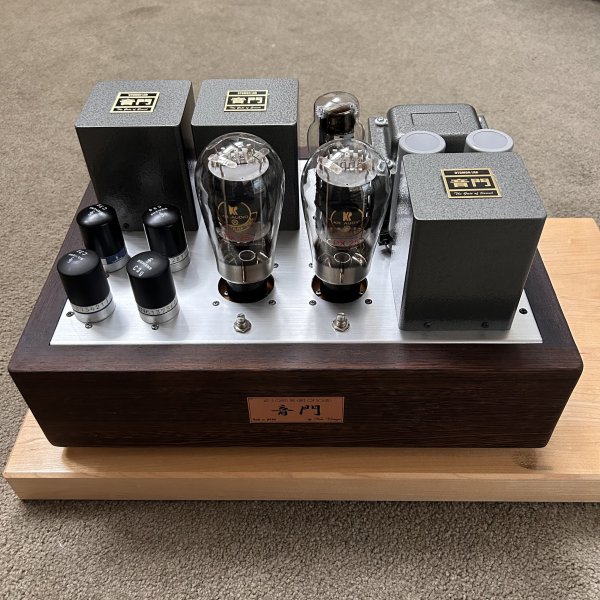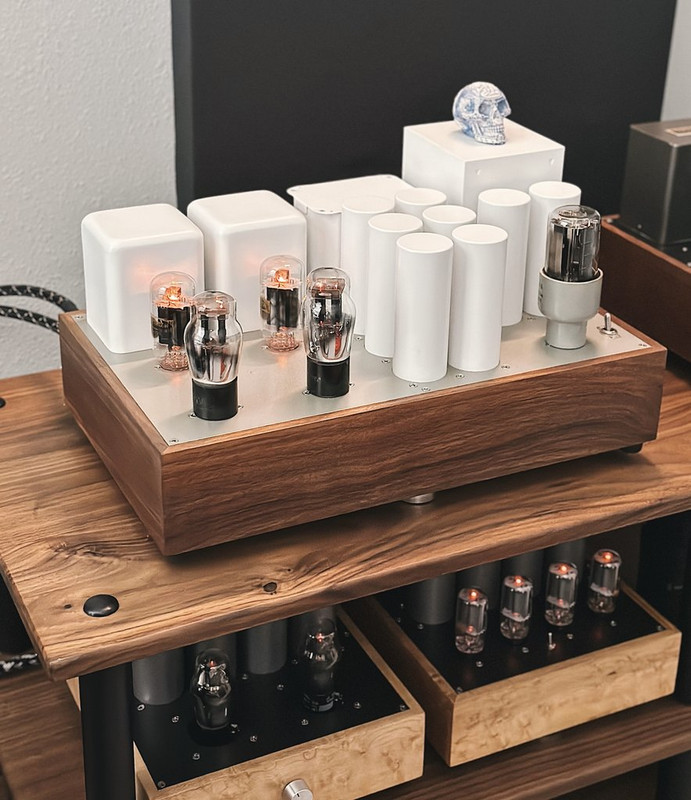Hi guys, great thread, glad it's still active. I can post some pictures of my own SET set up but I have a question I've been trying to get an answer to for ages and wondered if someone here can help. I ask more out of idle curiosity than anything else.
I have a pair of Silvercore 833 MKII mono blocs, which i am exceptionally happy with. They are of course single ended triode design but they only have a balanced XLR input. I have almost no knowledge of electrical engineering but I do understand how a balanced/common mode rejection design works and thus know that if an amp is single ended, it cannot also be balanced, so I don't understand why such an amp would have an XLR as the input unless it was simply because the designer chose to use that connection for convenience.
I use adapters on my (long) IC cable runs, which are themselves RCA only, as is my pre-amp. I've asked my dealer who supplied the units a number of times but whilst he's given an explanation, I've never quite understood it. He says there is a transformer immediately behind the input which recombines the signal before passing it through the amplification stages. This makes sense but I still don't understand why you would do that rather than just use an RCA input and lose the transformer (which would simply add cost, unnecessarily it would seem).
I have a pair of Silvercore 833 MKII mono blocs, which i am exceptionally happy with. They are of course single ended triode design but they only have a balanced XLR input. I have almost no knowledge of electrical engineering but I do understand how a balanced/common mode rejection design works and thus know that if an amp is single ended, it cannot also be balanced, so I don't understand why such an amp would have an XLR as the input unless it was simply because the designer chose to use that connection for convenience.
I use adapters on my (long) IC cable runs, which are themselves RCA only, as is my pre-amp. I've asked my dealer who supplied the units a number of times but whilst he's given an explanation, I've never quite understood it. He says there is a transformer immediately behind the input which recombines the signal before passing it through the amplification stages. This makes sense but I still don't understand why you would do that rather than just use an RCA input and lose the transformer (which would simply add cost, unnecessarily it would seem).


















